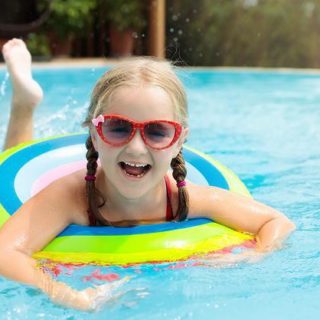Which SPF Is Best?
According to dermatologists, one of the best ways to protect your skin from sun damage is to wear a sunscreen with a minimum sun protection factor (SPF) of 30 and broad-spectrum protection. But not all sunscreens are created equal, and which SPF is best will depend on several different factors, as well as personal choice.
What Is SPF?
A sunscreen’s SPF tells you how long it would take for the sun’s radiation to redden your skin if the product is used exactly as directed, versus how long it would take for your skin to redden without the product, according to the Skin Cancer Foundation. A sunscreen that offers broadband, or broad-spectrum, protection shields against the two types of rays that can damage skin cells: UVA and UVB. UVA rays make up 95 percent of the ultraviolet radiation that reaches the earth’s surface from the sun and is the main culprit for skin cancer and skin aging. UVB rays primarily cause sunburn and skin reddening.
Which SPF Is Best for You?
Determining which SPF is best for you depends on a few different factors, such as age and skin tone. For example, a child’s sensitive skin may become irritated by sunscreen products that contain chemicals. Oxybenzone, a common ingredient in sunscreen, can cause allergic reactions and can affect hormones, according to the Environmental Working Group (EWG).
If you have a darker skin tone, you may think you don’t need sunscreen. While melanin, the pigment that gives skin its color, does provide some protection from UV rays, it doesn’t protect you completely. The American Academy of Dermatology’s recommendation of a minimum SPF of 30 still applies.
Another factor you may want to consider when deciding which SPF is best for you is if you tend to sweat a lot or will be swimming. The Food and Drug Administration (FDA) does not allow sunscreen to be labeled as “waterproof” or “sweat-proof,” so you’ll instead want to look for a sunscreen that is labeled as “water-resistant.” The label will also say whether it’s resistant for 40 minutes or 80 minutes. Keep in mind, however, that you should still reapply the sunscreen after swimming or sweating, or every two hours if your skin hasn’t been exposed to water.
Are Lower SPFs Effective?
There are products available that have low SPFs, such as two, four, or eight. While they provide some protection, you would need to apply them more frequently and use more product to get adequate protection. Typically, these lower SPFs are used for tanning purposes.
Are Higher SPFs Better?
SPFs higher than 50 provide some extra protection, but not that much more, according to EWG. People who use higher SPFs may also falsely believe they can stay in the sun, which can lead to overexposure to UV rays. High SPF products may also be falsely marketed as, say, SPF 100, when they’re actually much less than that.
To get the best protection from your sunscreen, make sure you apply it before you leave the house. The Skin Cancer Foundation recommends applying sunscreen 30 minutes before sun exposure to allow the ingredients to bind to the skin. You should use one ounce of sunscreen, which is about as much as a shot glass, each time you apply it. Though it seems obvious, be sure to use sunscreens that are made for the face and body only on those areas; sunscreens for the face are designed to cause less irritation to the skin. Similarly, be sure to use a lip balm that also contains sunscreen.
If you have any questions or doubts about changes in your skin, be sure to ask your doctor or dermatologist. If you need help finding a dermatologist, visit our Find a Doctor page.

